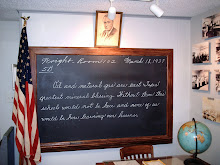Attn: Science educators, STEM advocates, health and safety, lab safety, security, IAQ, IPM, emergency and risk management professionals, first responders, school administrators, parents…
Do you know someone whose sense of responsibility, inspirational leadership, and exemplary persistence and courage protects children from school hazards and unhealthy school conditions?
Do you know someone whose sense of responsibility, inspirational leadership, and exemplary persistence and courage protects children from school hazards and unhealthy school conditions?
By nominating a Hero you can help make March 18 an annual day that brings the Lessons of the 1937 Texas School Explosion to our nation's schools and celebrates the leadership that can save lives.
Send your hero's name, contact information, and your hero's story by February 15, 2011 to healthykids@rcn.comThe Healthy Kids Healthy Schools Hero Award was created as an annual opportunity to tell the story of New London Texas' preventable tragedy, to promote inspirational examples of leadership and partnerships, and to start conversations to identify and eliminate chemical hazards and unhealthy conditions in today's schools.
Break the Silence.
The Heroes Award is part of an ongoing campaign to bring "safety" from the margins to the core of school curriculum and community culture.
The goal is to strengthen parent involvement and community partnerships to establish the 21st century standards and safeguards that can protect children from deadly explosions, fires, chemical spills and toxic exposures.
The goal is to strengthen parent involvement and community partnerships to establish the 21st century standards and safeguards that can protect children from deadly explosions, fires, chemical spills and toxic exposures.
This cenotaph, erected in 1939 is the memorial to victims of the explosion. The sculptural block of Texas granite depicts twelve life-size figures, representing children coming to school, bringing gifts and handing in homework to two teachers. Around the inside of the base are the individual names of those who died. The Egyptians defined a cenotaph as a symbolic tomb, honoring the dead but not containing the body. It is a sepulchral monument erected to commemorate a person or persons buried elsewhere....let us suggest the legislature of Texas set aside a special day each year to be observed as a memorial day on which tribute will be paid to the children and teachers who died in this catastrophe...and to make laws of safety... Our daddies and mothers, as well as the teachers, want to know that when we leave our homes in the morning to go to school, that we will come out safe when our lessons are over. Read more.

 •
• 